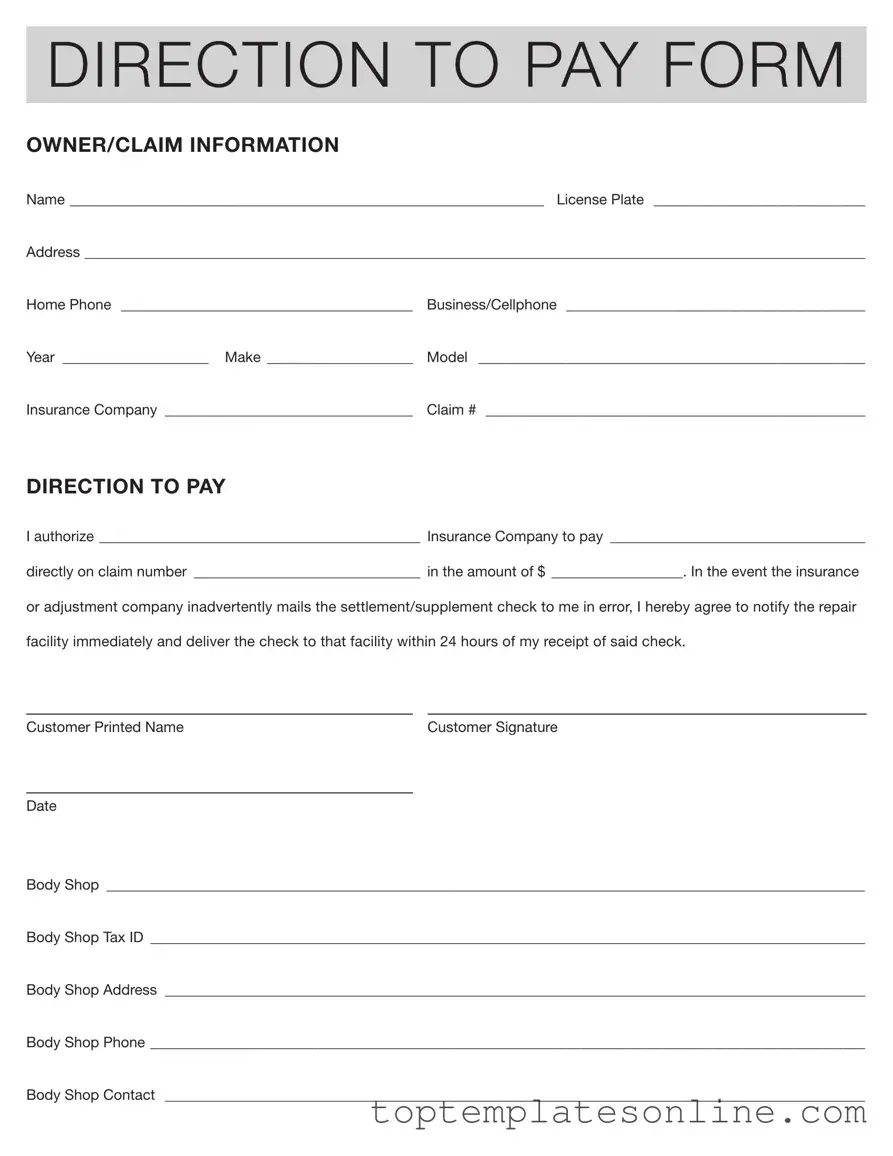Fillable Authorization And Direction Pay Form
The Authorization and Direction Pay form is a document that allows a claimant to direct their insurance company to pay a specific repair facility directly for services rendered. This form includes essential information such as the claimant's details, vehicle information, and the amount to be paid. By completing this form, the claimant ensures that the repair shop receives payment promptly, streamlining the claims process.
Customize Authorization And Direction Pay Here
